Tag: sun’
Shoe Box Solar Viewer for Watching a Solar Eclipse
- by KitchenPantryScientist
Here’s how to make simple solar viewers to indirectly view an eclipse.
NEVER look directly at the sun, since you can permanently damage your retinas (the light sensors on the back of your eyeballs.)
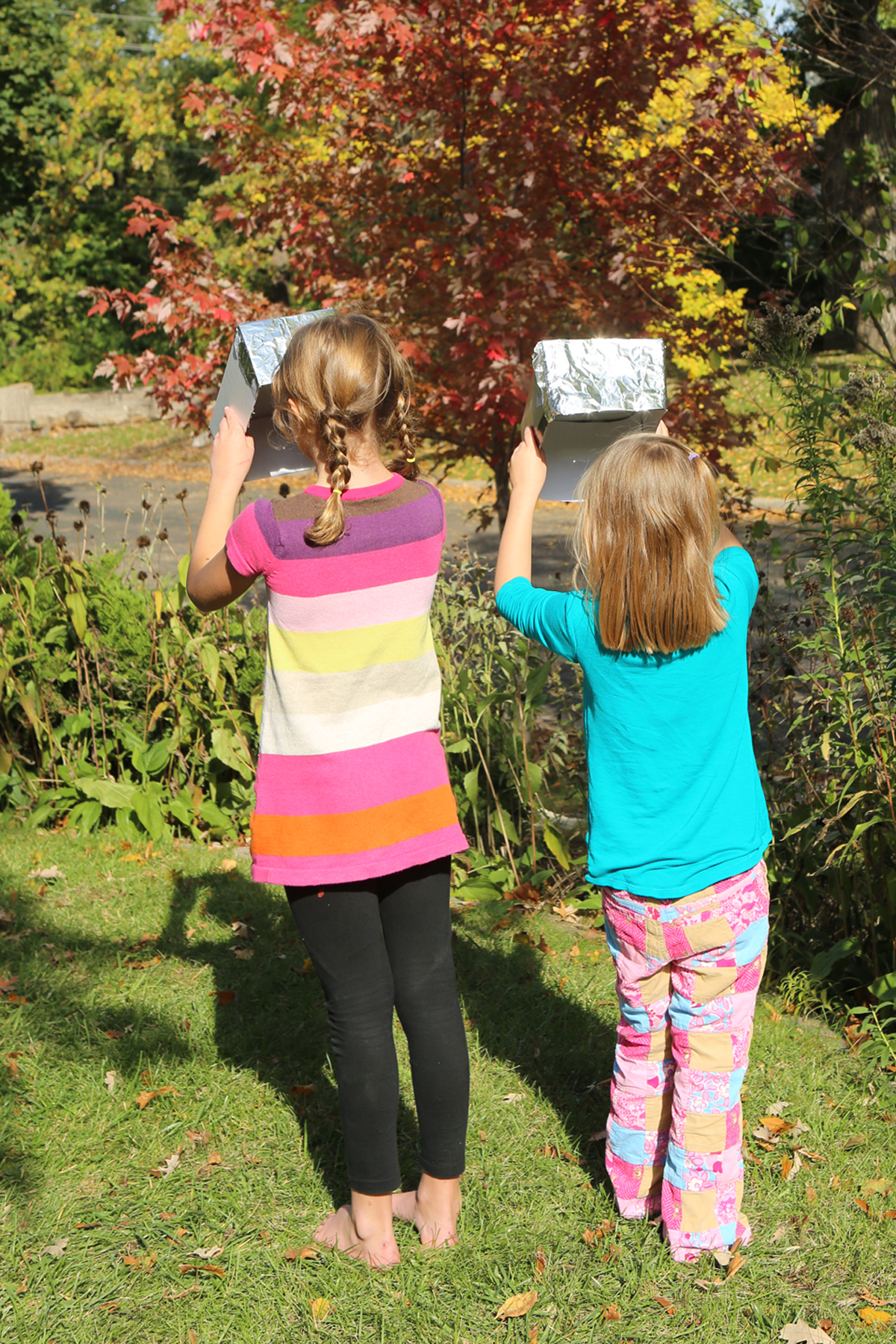
You can safety view the sun (and therefore a solar eclipse) using a shoe box by standing with the sun BEHIND you. All you need is a shoe box without a lid, a piece of white paper, aluminum foil, a pin and tape. It’s perfect for viewing a solar eclipse, like the one coming up this afternoon. It will be visible from around 4:30 CST until 6:00 PM CST here in Minnesota!
A solar eclipse happens when the moon passes between the sun and the earth, blocking the sun from view.Go to this eclipse calculator to see when and where you can best view the eclipse with your viewer! Here in Minnesota, we’ll see a partial eclipse.
First, tape white paper over one end of the shoe box (on the inside.) This is your viewing screen.
Then, cut a big notch out of the other end of the shoe box and tape aluminum foil over it.
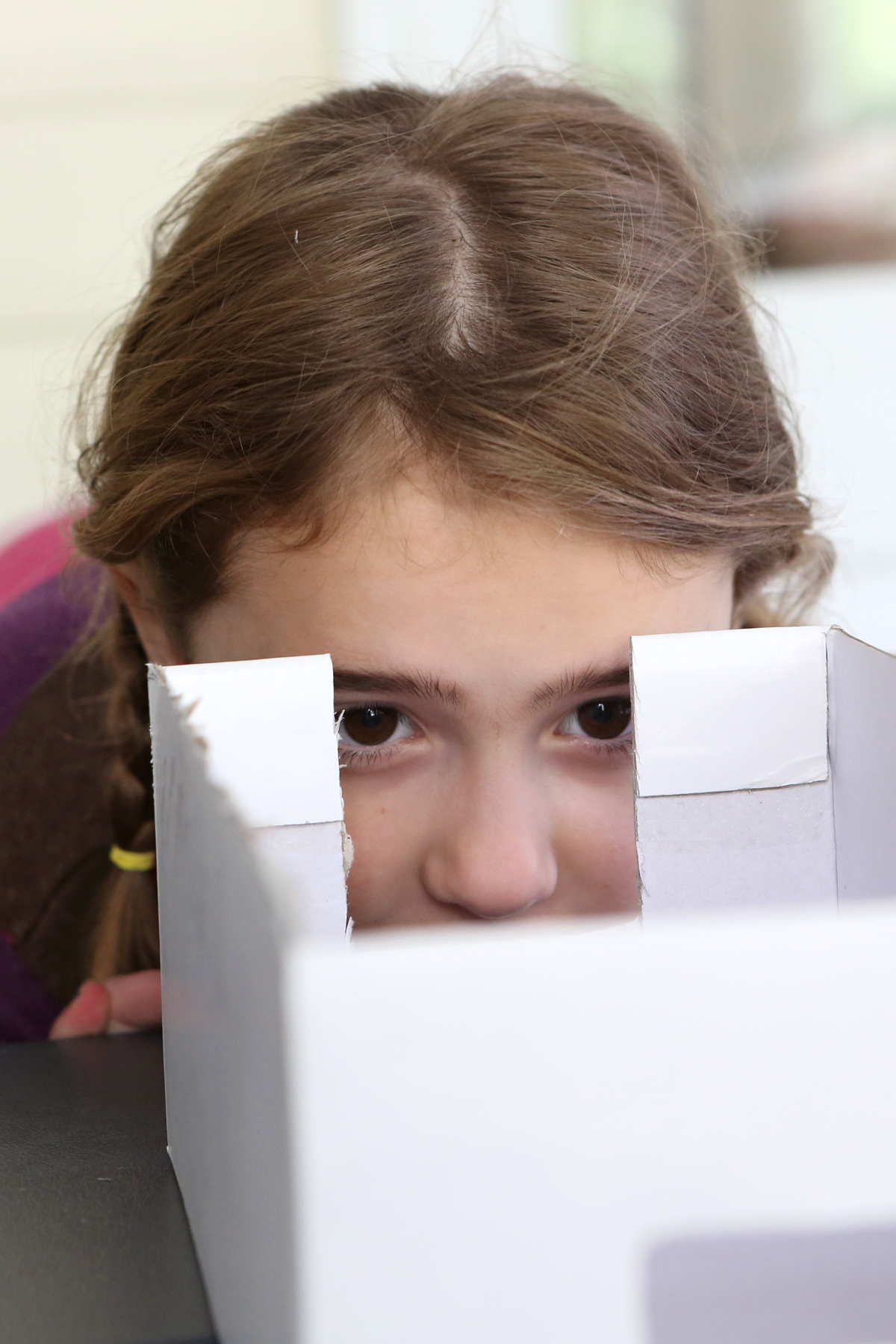
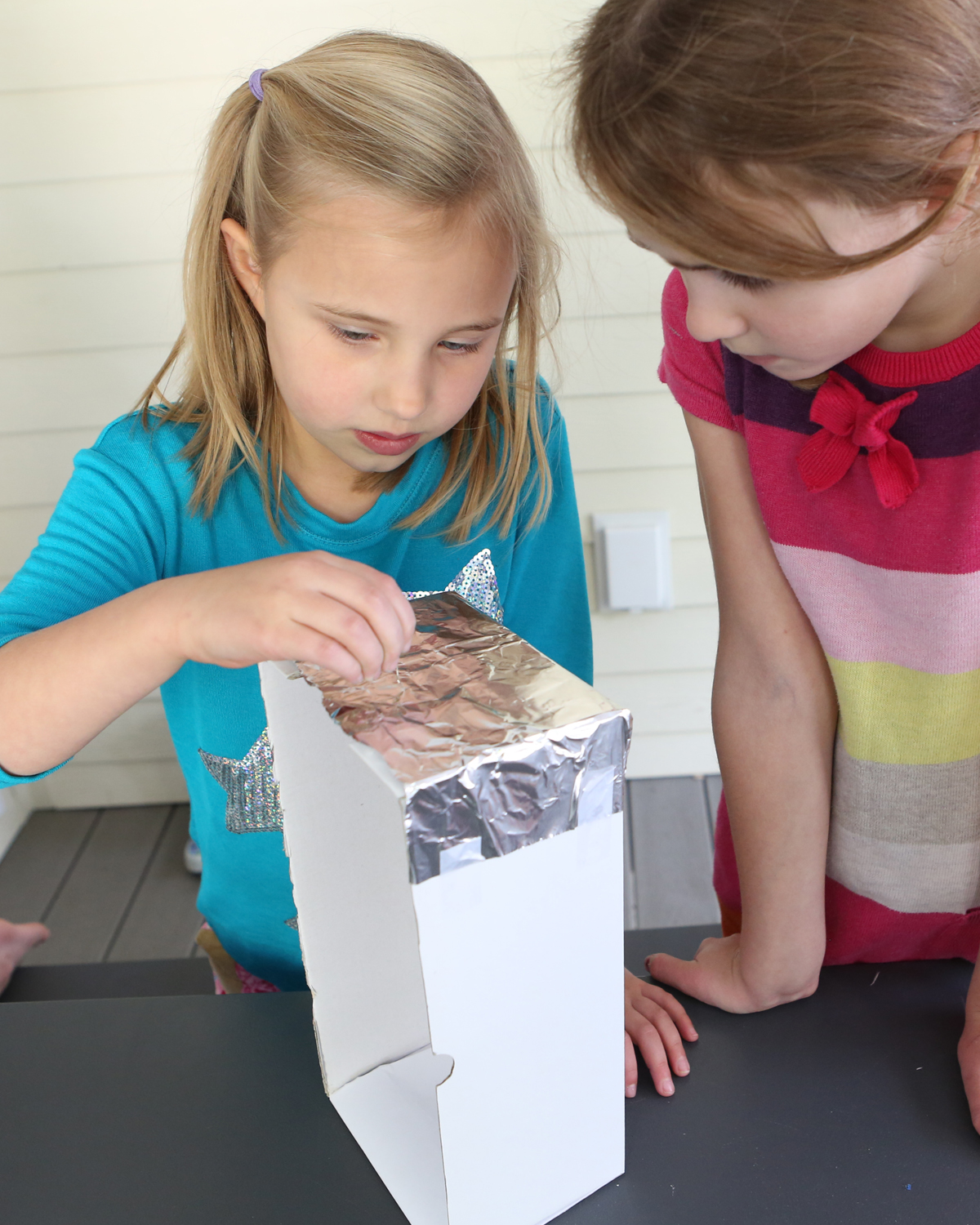
Use a pin to poke a hole in the center of the foil. If you mess up, you can always put new foil on and try again. The smaller the hole, the better the focus, but we made ours a little bigger than the actual size of the pin.
Now, stand with the sun BEHIND you. (See photo at top of post. The sun is behind the girls, high in the sky.) NEVER LOOK AT THE SUN THROUGH THE PINHOLE ITSELF.
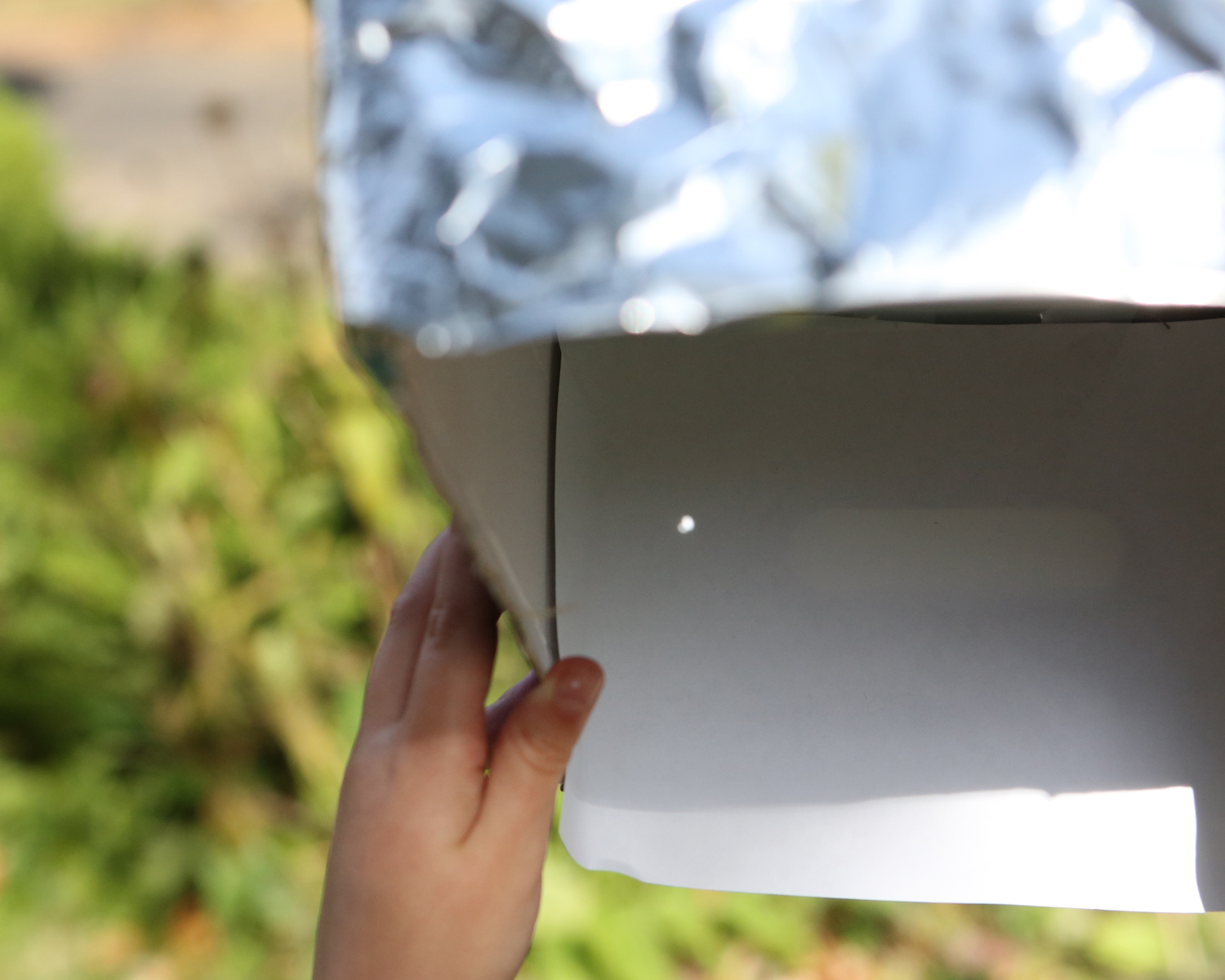
Hold the box upside down so the pinhole is pointed at the sun behind you. The foil should be behind your line of sight so it’s not reflecting the sun in your eyes. Light rays from the sun will shine through the pinhole and project an (upside down) image on the white paper.
Practice on a sunny day (or when the sun peeks out between the clouds) so that you know what to do when it’s time for the eclipse. Small children should be supervised so they don’t try to look directly at the sun.
You can do the same thing using two white index card, poking a hole in one you hold nearest to you and projecting the image on the one you hold away from you (with the sun behind you.)
Or, if you’d rather order “eclipse glasses”, here’s a link for where to buy AAS-approved and tested solar viewers.
If you’re interested in projecting a larger image of the sun, try making a solar viewer from binoculars, a tripod and a white piece of paper. Click here for directions!
Enjoy! Watching an eclipse in the 70s after my dad came to school and helped us all make these boxes is one of my earliest “science” memories!
Homemade Transit of Venus Solar Viewer
- by KitchenPantryScientist
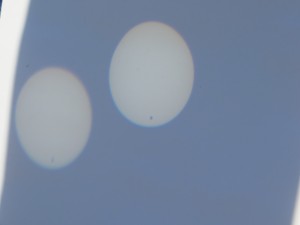
Our viewer is working really well! See Venus? We put a piece of paper behind the binoculars to get a bigger dark area on our viewer.
Although our pinhole viewers were great for watching the solar eclipse a few weeks ago, I was hoping to get a bigger projection of the sun’s image to watch the transit of Venus. (Venus is approximately the same size as earth and will be harder to see as it passes in front of the sun.)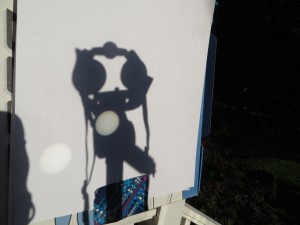
With a pair of binoculars and a tripod, you can project the sun’s image on a piece of white paper so that it’s large enough to see even some sunspots.
DO NOT LOOK AT THE SUN THROUGH THE BINOCULARS!!!
Simply attach them to your tripod so that the eyepieces are pointing away from the sun and the bigger ends are pointing toward the sun. We used duct tape. The sun should be behind the binoculars.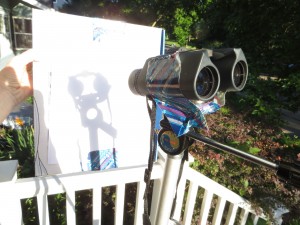
Hold up a piece of paper and adjust the angle of the binoculars on the tripod until you see double suns (there are 2 lenses) appear on your paper. If you can, adjust the angle further so that one of the images appears in the middle of the shadow of the binoculars. This will make it easier to see. You’ll notice that the further from the binoculars you hold the paper, the bigger the image will appear. It will get out of focus if you hold it too far away though.
We taped our white paper to a shoebox that we’ll be able to set on something when we watch the transit and won’t have to hold it the entire time!
Here’s a great article from today’s Science Times about the Transit of Venus.
Solar Storms and the Zombie Apocalypse
- by KitchenPantryScientist
My son came home from school the other day joking about a zombie apocalypse. Before that, it was the Mayan apocalypse. And now, he keeps hearing about all these “freaky” solar storms. He laughs, but I’m sure his 11-year-old imagination leaves plenty of room for worry.
I can’t kill the zombies lurking in his subconscience, but I can put his mind (and my own) at ease about the solar storms with this short NASA video that explains that we’re in a totally normal sun cycle and are protected by Earth’s atmosphere